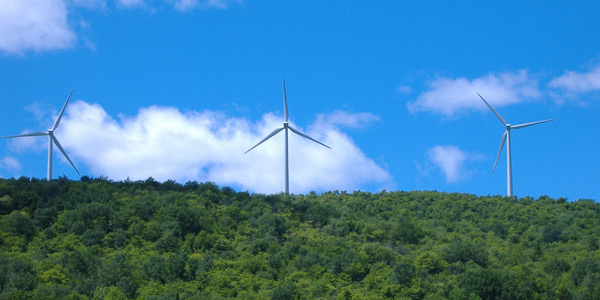By Michael Kuser
WESTBOROUGH, Mass. — ISO-NE is working to adopt clustering methodology, already used by every other ISO/RTO in the country, to speed the development of new transmission capacity, particularly to help free wind power trapped in Maine.
Transmission bottlenecks that prevent Maine’s wind generation from reaching load centers in Massachusetts and Connecticut could be relieved by allowing large and small generators to pool their interconnection requests, Al McBride, director of system planning, told the Planning Advisory Committee on Wednesday.
McBride presented a Maine Resource Integration Study that showed how generators in the western and northern parts of the state could combine their interconnection applications and thus share costs on required upgrades. The grid operator could also analyze the combined interconnection requests in the same system impact study (SIS).
Interconnection Queue Backlog
ISO-NE has experienced a persistent backlog of interconnection requests in Northern and Western Maine, where several thousand megawatts of proposed resources have requested interconnection. In March, the RTO said it would not issue a competitive solicitation for the proposed Keene Road market efficiency transmission upgrade because the cost would be greater than the production savings. (See ISO-NE Nixes Keene Road Tx Upgrade.)
The proposed clustering methodology comprises two phases. In the first phase, the RTO will identify the initial designs of cluster-enabling transmission upgrades (CETU) in the regional system planning process. In the second phase, the RTO will conduct the cluster SIS to study the interconnection of the individual projects, together with the identified CETU.
New England is going to be looking at applying the clustering methodology to both AC and HVDC solutions. One speaker expressed concern that having two options would mean neither would reach critical mass, saying, “Sounds like you could have two undersubscribed” solutions.
Driven by the Wind
Wind resources looking to be included in such a cluster will have to join the transmission interconnection queue by about August. The study proposes that transmission owners prepare cost estimates by the PAC meeting in June, after which ISO-NE will calculate cost allocations and issue a draft report for comment.
As is currently the case, none of the shared or individual interconnection transmission upgrade and facility costs will be incorporated into regional transmission rates.
In June 2015, the American Wind Energy Association petitioned FERC to initiate a rulemaking process to address “complex, time-consuming technical disputes” in the interconnection queue process that “undermine the ability of new generators to compete.”
In response, FERC last December issued a Notice of Proposed Rulemaking that would change the pro forma large generator interconnection rules to increase certainty and transparency for new resources (RM17-8). (See FERC Proposes Changes to Interconnection Rules.)
New Circuits
The Maine Resource Integration Study assesses new 345-kV AC transmission circuits that could connect to the areas with the largest number of interconnection requests. Evaluations include interconnecting with, or bypassing, existing lines and substations.
The New England Power Pool Participants Committee in February supported Tariff changes for the proposed interconnection clustering methodology. Two or more interconnection requests requiring common new transmission infrastructure would trigger the clustering methodology.
Participants in a cluster would be allocated a percentage of costs for shared upgrades and assume sole responsibility for facilities needed solely for their project.





